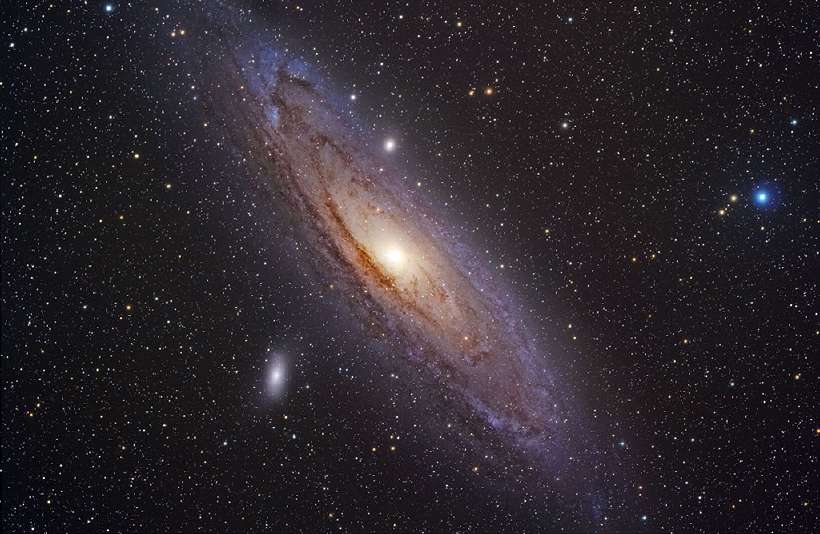Which Galaxy is Visible to the Eye?
Home / Science for Kids / 5Ws & H For Kids / Which Galaxy is Visible to the Eye?
The sun we see everyday is just one of the thousands of stars we see at night. Such a huge collection of stars is called a galaxy. And the stars we see belong to a galaxy called the Milky Way. There are millions of galaxies in the sky, most of whom are hidden from our view.
However, there are some galaxies which can be seen with the naked eye. The most famous and the brightest of these is the M31 or the Andromeda galaxy.
The spiral galaxy

The Andromeda galaxy is about 2.5 million light years away, simply put light takes 2.5 million years to travel from Andromeda to earth. It is believed that Andromeda has about 400 billion stars. This makes it almost twice as big as our Milky Way.
The Andromeda galaxy is spiral in shape, and like other spiral galaxies, it is a giant pinwheel of stars, gas and dust. And it has two smaller satellite galaxies quite like the way the moon is a satellite of the earth.
A Persian astronomer named Al-Sufi described it in his Book of Fixed Stars in 964 AD as the ‘little cloud’. Indeed! If you are able to spot it on a clear night, it does look like a tiny cloud. Andromeda was rediscovered in 1612 after the invention of the telescope by the German astronomer, Simon Marius.
For centuries, the Andromeda galaxy was thought to be a part of the Milky Way. It was only in the 1920s that Edwin Hubble a famous astrophysicist, determined conclusively that the Andromeda was indeed a galaxy.
A celestial collison
Scientists say that all the galaxies are racing away from each other. But the Milky Way is actually racing towards the Andromeda galaxy. And the enormous gap between the Milky Way and Andromeda is closing at about 500,000 kilometers an hour. This pace will quicken as the two galaxies near each other.
John Dubinski, professor of astronomy at the Canadian Institute for Theoretical Astrophysics points out that the two galaxies are actually on a collision course. They may collide almost three billion years later.
358 words |
3 minutes
Readability:
Grade 8 (13-14 year old children)
Based on Flesch–Kincaid readability scores
Filed under: 5ws and h
Tags: #satellites, #galaxy, #stars, #clouds, #galaxies
You may also be interested in these:
Planets! Planets! and more Planets!
How Will our Sun Die?
How Does Satellite TV Work?
Saraswati River in the Thar Desert
How do Satellites Stay Up?